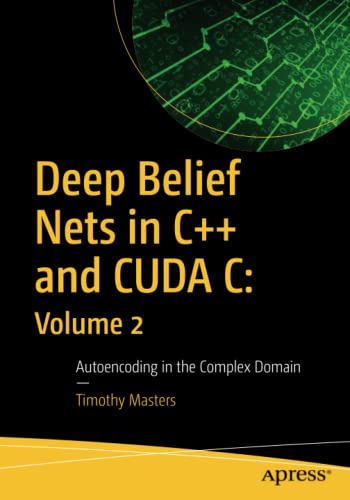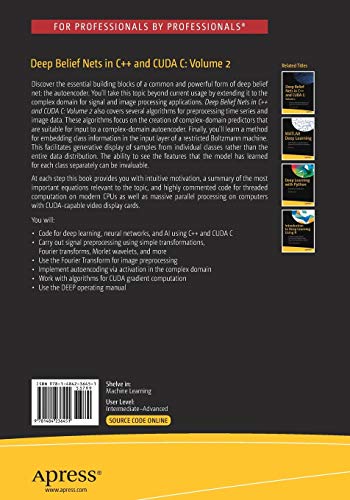All Categories



Deep Belief Nets in C++ and CUDA C: Volume 2: Autoencoding in the Complex Domain
Share Tweet
Get it between 2025-05-20 to 2025-05-27. Additional 3 business days for provincial shipping.
*Price and Stocks may change without prior notice
*Packaging of actual item may differ from photo shown
- Electrical items MAY be 110 volts.
- 7 Day Return Policy
- All products are genuine and original
- Cash On Delivery/Cash Upon Pickup Available








About Deep Belief Nets In C++ And CUDA C: Volume
Discover the essential building blocks of a common and powerful form of deep belief net: the autoencoder. You’ll take this topic beyond current usage by extending it to the complex domain for signal and image processing applications. Deep Belief Nets in C++ and CUDA C: Volume 2 also covers several algorithms for preprocessing time series and image data. These algorithms focus on the creation of complex-domain predictors that are suitable for input to a complex-domain autoencoder. Finally, you’ll learn a method for embedding class information in the input layer of a restricted Boltzmann machine. This facilitates generative display of samples from individual classes rather than the entire data distribution. The ability to see the features that the model has learned for each class separately can be invaluable. At each step this bookprovides you with intuitive motivation, a summary of the most important equations relevant to the topic, and highly commented code for threaded computation on modern CPUs as well as massive parallel processing on computers with CUDA-capable video display cards. What You'll Learn Code for deep learning, neural networks, and AI using C++ and CUDA C Carry out signal preprocessing using simple transformations, Fourier transforms, Morlet wavelets, and more Use the Fourier Transform for image preprocessing Implement autoencoding via activation in the complex domain Work with algorithms for CUDA gradient computation Use the DEEP operating manual Who This Book Is For Those who have at least a basic knowledge of neural networks and some prior programming experience, although some C++ and CUDA C is recommended.




























